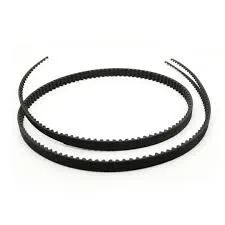- Arabic
- French
- Russian
- Spanish
- Portuguese
- Turkish
- Armenian
- English
- Albanian
- Amharic
- Azerbaijani
- Basque
- Belarusian
- Bengali
- Bosnian
- Bulgarian
- Catalan
- Cebuano
- Corsican
- Croatian
- Czech
- Danish
- Dutch
- Afrikaans
- Esperanto
- Estonian
- Finnish
- Frisian
- Galician
- Georgian
- German
- Greek
- Gujarati
- Haitian Creole
- hausa
- hawaiian
- Hebrew
- Hindi
- Miao
- Hungarian
- Icelandic
- igbo
- Indonesian
- irish
- Italian
- Japanese
- Javanese
- Kannada
- kazakh
- Khmer
- Rwandese
- Korean
- Kurdish
- Kyrgyz
- Lao
- Latin
- Latvian
- Lithuanian
- Luxembourgish
- Macedonian
- Malgashi
- Malay
- Malayalam
- Maltese
- Maori
- Marathi
- Mongolian
- Myanmar
- Nepali
- Norwegian
- Norwegian
- Occitan
- Pashto
- Persian
- Polish
- Punjabi
- Romanian
- Samoan
- Scottish Gaelic
- Serbian
- Sesotho
- Shona
- Sindhi
- Sinhala
- Slovak
- Slovenian
- Somali
- Sundanese
- Swahili
- Swedish
- Tagalog
- Tajik
- Tamil
- Tatar
- Telugu
- Thai
- Turkmen
- Ukrainian
- Urdu
- Uighur
- Uzbek
- Vietnamese
- Welsh
- Bantu
- Yiddish
- Yoruba
- Zulu
Dis . 25, 2024 06:43 Back to list
Understanding Timing Belts in Cars for Optimal Performance and Maintenance
Understanding Car Timing Belts An Essential Component for Vehicle Performance
The timing belt is an integral component of an automobile's engine, often overlooked until it becomes a significant problem. It plays a crucial role in regulating the timing of engine components, ensuring that everything runs harmoniously. In this article, we will explore the function of timing belts, signs of wear, the differences between timing belts and chains, and recommendations for maintenance.
What is a Timing Belt?
A timing belt is a rubber or silicone-based belt that links the crankshaft to the camshaft in an internal combustion engine. Its primary function is to synchronize the rotation of these two components, allowing the engine's valves to open and close at the right times during the intake and exhaust cycles. This synchronization is vital for efficient engine operation and performance.
In many engines, the timing belt is essential for maintaining the correct timing between the crankshaft and camshaft. If the belt fails, it can lead to severe engine damage, resulting in costly repairs. Therefore, understanding its operation is essential for any vehicle owner.
Signs of a Worn Timing Belt
Recognizing the signs of a worn timing belt can save you from significant engine troubles. Common indicators include
1. Engine Misfiring If you notice that your engine is misfiring or running roughly, it could be due to a worn timing belt that is causing the camshaft to be out of sync with the crankshaft.
2. Strange Noises Unusual noises such as ticking or rattling from the engine could indicate a failing timing belt. This noise is caused by the belt slipping or becoming loose.
4. Check Engine Light A check engine light can indicate various issues, including timing belt problems. It’s best to have the system diagnosed to pinpoint the exact issue.
5. Visible Wear If you have access to the timing belt, inspect it for visible signs of wear, such as cracks, fraying, or missing teeth.
car timing belts

Timing Belts vs. Timing Chains
While timing belts and chains serve the same function, they differ in several ways. Timing belts are typically made of rubber and require periodic replacement, usually between 60,000 to 100,000 miles, depending on the vehicle manufacturer’s recommendations. In contrast, timing chains are made of metal and are generally more durable, lasting the life of the engine.
However, timing chains can be more expensive to replace if they do wear out and tend to create more noise as they age. Hence, it is essential to understand which system your vehicle utilizes and follow the maintenance schedule accordingly.
Maintenance Recommendations
To prolong the life of your timing belt, regular maintenance is essential. Here are some recommendations
1. Follow Manufacturer Guidelines Always adhere to your vehicle manufacturer’s recommended maintenance schedule regarding timing belt replacement. Some may suggest replacing it every 60,000 miles, while others may extend it to 100,000 miles or more.
2. Regular Inspections Have your timing belt inspected regularly, especially if you notice any of the symptoms mentioned earlier. A professional mechanic can assess its condition and let you know if it requires replacement.
3. Address Issues Promptly If you experience any signs of a failing timing belt, address the issue immediately. Postponing repairs can lead to catastrophic engine failure and significantly higher repair costs.
4. Consider the Whole System When replacing a timing belt, it is often advisable to replace other components, such as the water pump, tensioners, and idlers, to ensure everything operates smoothly and prevent future issues.
Conclusion
The timing belt is a vital part of your car's engine that plays a significant role in performance and reliability. Understanding its function, recognizing the signs of wear, and following maintenance guidelines can help you avoid costly repairs and keep your vehicle running smoothly. Regular attention to this crucial component can provide peace of mind and promote a more efficient driving experience. Don’t wait until it’s too late—be proactive about your timing belt maintenance and enjoy the long-term benefits of a well-functioning engine.
-
Korean Auto Parts Timing Belt 24312-37500 For Hyundai/Kia
NewsMar.07,2025
-
7PK2300 90916-T2024 RIBBED BELT POLY V BELT PK BELT
NewsMar.07,2025
-
Chinese Auto Belt Factory 310-2M-22 For BMW/Mercedes-Benz
NewsMar.07,2025
-
Chinese Auto Belt Factory 310-2M-22 For BMW/Mercedes-Benz
NewsMar.07,2025
-
90916-02660 PK Belt 6PK1680 For Toyota
NewsMar.07,2025
-
drive belt serpentine belt
NewsMar.07,2025

